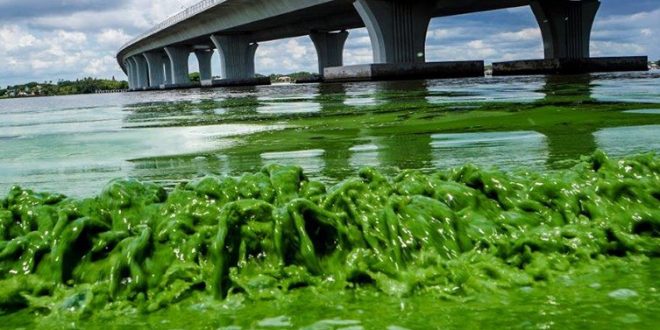A slimy, thick blue-green algae is taking over Florida’s coasts and it just might be here to stay. In addition to posing a risk to human health, the algae-infested waters have a negative economic impact on local tourism in the Sunshine State and are taking a toll on the ecosystem.
The algal blankets on Florida’s coastline are so thick that they can be seen from space. According to the National Geographic, this year’s algal outbreak in Florida was so severe that officials declared a state of emergency in four counties. Algae have clogged the waters around its tourism-heavy coastline. There are several species of algae, but only a few are toxic.
The blue-green algae that are affecting Florida’s coastline do not come from the oceans. They come from the Lake Okeechobee, and thrive in warm water. The lake is located between sugarcane fields and cattle farms. It absorbs agricultural runoffs from both sides, so it’s rich in nitrogen and phosphorous – the nutrients that fuel algal blooms.
Can Florida battle more algae?
During a normal wet season, the lake gains up to three feet of rainfall and the excess water is directed to the coasts through canals. Legislative bickering and political inertia is a major obstacle in solving the problem. Global warming is helping the algal blooms because the blue-green algae proliferate under warm climate. The climate is expected to keep warming in the years to come. Can Florida and its economy battle more algae?
The Florida Department of Environmental Protection analyzed water samples from across South Florida, and found algal blooms in 44 locations. As many as 34 samples contained toxins, and 12 of them could pose a health risk. Donald Anderson, the director of the U.S. National Office for Harmful Algal Blooms, told CNBC spraying clay in the affected areas could help solve the problem.
Agencies/Canadajournal
 Canada Journal – News of the World Articles and videos to bring you the biggest Canadian news stories from across the country every day
Canada Journal – News of the World Articles and videos to bring you the biggest Canadian news stories from across the country every day



